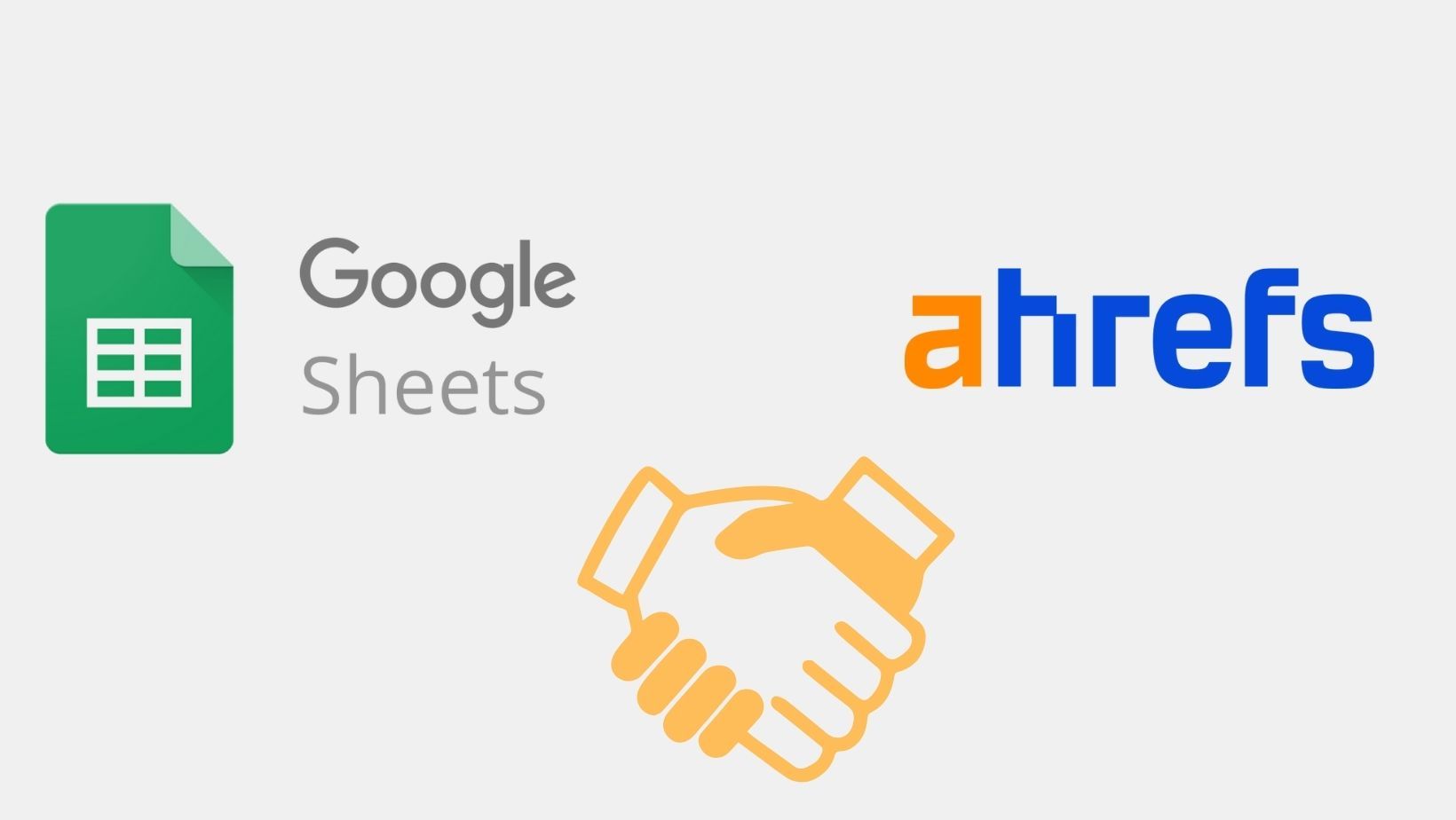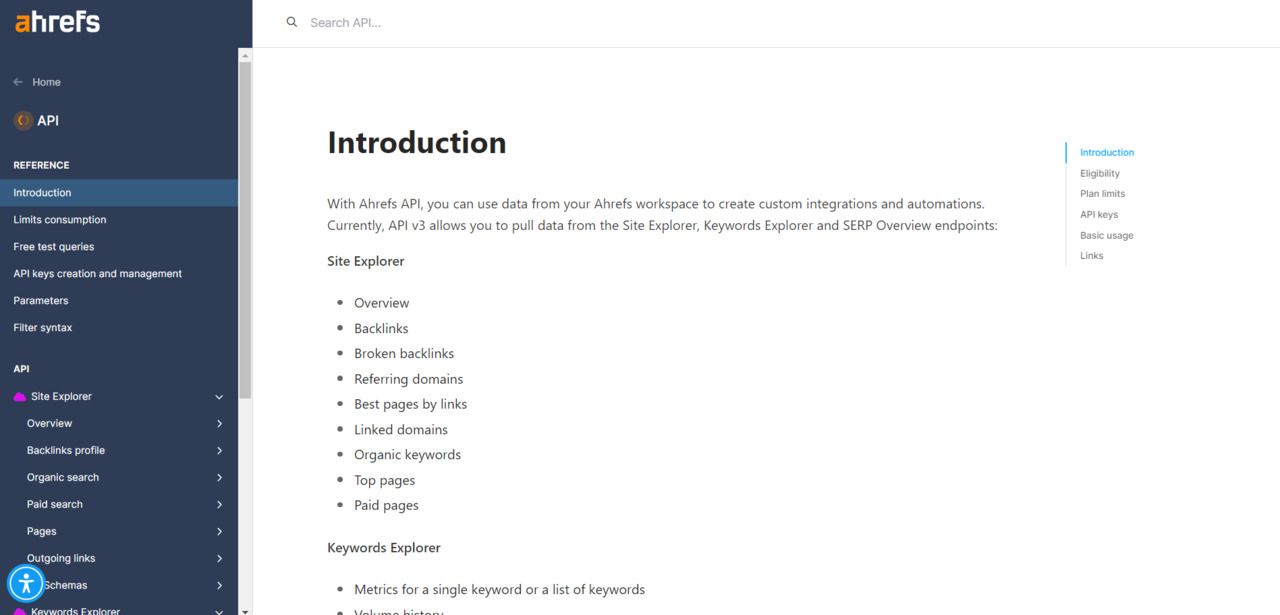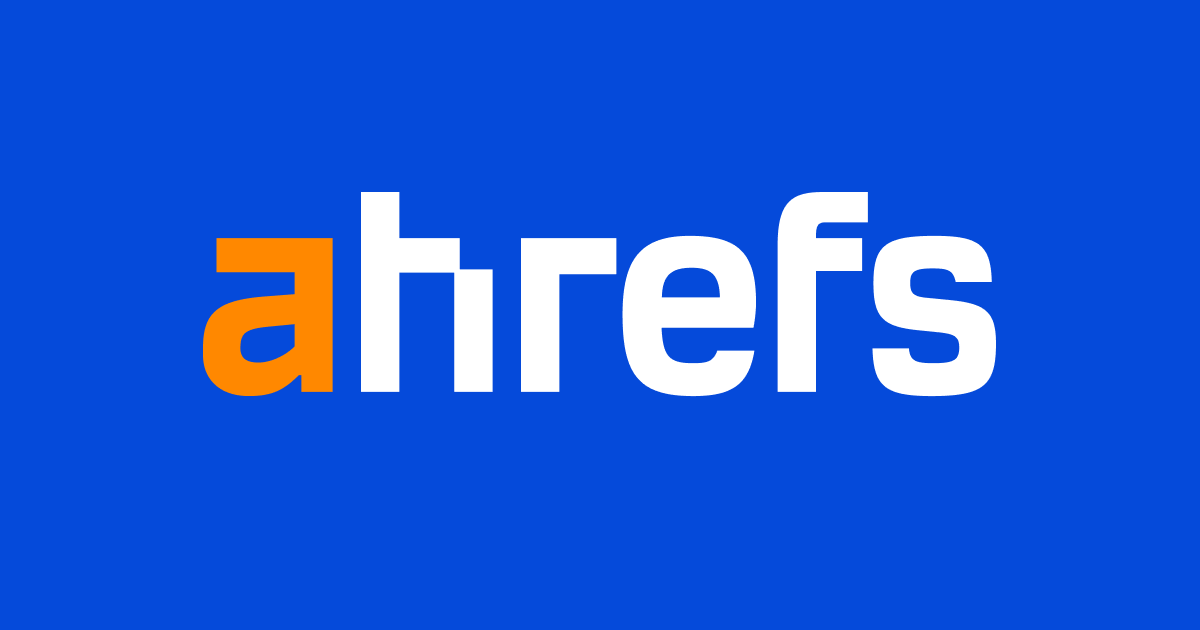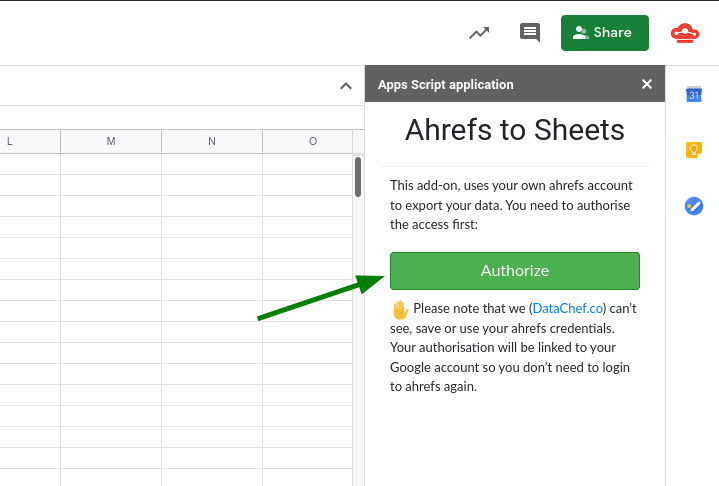Integrating Ahrefs API with Google Sheets revolutionizes the landscape of SEO analytics, providing a powerful synergy for data-driven insights.
Ahrefs, a leading SEO tool, offers a robust API that enables users to import valuable data into Google Sheets effortlessly. This integration serves as a catalyst for efficient analysis and reporting, offering marketers and SEO professionals an unparalleled advantage in optimizing their strategies.
To unlock the full potential of this dynamic duo, a fundamental understanding of the Ahrefs API and its seamless integration with Google Sheets is essential.
In this exploration, we dive into the intricacies of leveraging these tools to elevate your SEO game.

What Are Ahrefs and Google Sheets?
Harnessing the symbiotic power of Ahrefs and Google Sheets for SEO analytics is a game-changer, bringing a new dimension to data-driven insights.
Ahrefs, a trailblazing SEO tool, boasts an influential API that streamlines the process of importing critical data into Google Sheets. This transformative integration acts as a catalyst, propelling marketers and SEO professionals towards unprecedented efficiency in analysis and reporting.
To fully exploit the potential of this dynamic collaboration, a foundational comprehension of the Ahrefs API and its seamless synergy with Google Sheets is imperative.
Connect to the Ahrefs API
Establishing a connection to the Ahrefs API is the first step in unleashing the full potential of Ahrefs and Google Sheets synergy.
Begin by obtaining API credentials from Ahrefs and then proceed to set up your API access. This involves configuring authentication parameters such as API key and endpoint URL within Google Sheets.
Once successfully connected, you gain direct access to Ahrefs' extensive database, empowering your sheets with real-time, up-to-date SEO data.
How to Import Ahrefs Data to Google Sheets
Importing Ahrefs data into Google Sheets is a straightforward yet powerful procedure that enhances your analytical capabilities.
Utilize Google Sheets' built-in functions like IMPORTJSON or custom scripts to fetch data from the Ahrefs API.
Customize the import process by specifying parameters such as date range, keywords, or backlink metrics to tailor the data to your specific needs.
The flexibility offered by this integration enables you to create dynamic, automated reports and visualizations directly within Google Sheets.
This seamless import process transforms raw data into actionable insights, providing a comprehensive view of your website's SEO performance.
Advanced Features of Ahrefs Integration with Google Sheets
The integration of Ahrefs API with Google Sheets extends far beyond basic data importation. Advanced features unlock a realm of possibilities, transforming the way SEO professionals interact with data.
With these enhanced capabilities, users can delve deeper into analytics, uncovering granular details and trends that are pivotal for strategic decision-making.
The advanced integration features facilitate a more sophisticated approach to SEO analytics, allowing for customized data manipulation and in-depth analysis directly within Google Sheets.
Custom Requests with Ahrefs API
Exploiting the full potential of Ahrefs API in Google Sheets involves leveraging the power of custom requests.
This advanced feature enables users to go beyond standard data retrieval, allowing for tailored queries that align precisely with specific analytical needs.
Custom requests empower users to specify unique parameters and filters, making it possible to extract highly specialized data sets.
This capability is particularly beneficial for users seeking to conduct thorough research on niche SEO elements or those who require data that is not readily available through standard API endpoints.
By mastering custom requests, users can refine their data analysis, ensuring that every piece of information extracted is relevant and actionable.
Appendix: Connect to the v3 API (Enterprise only)

The v3 API of Ahrefs, available exclusively to Enterprise users, represents the pinnacle of Ahrefs' API offerings. This latest version boasts enhanced capabilities and features designed to cater to the most demanding SEO analytics requirements.
Connecting to the v3 API opens the door to a wider array of data points and a more sophisticated level of analysis. The process involves advanced authentication procedures and configuration settings that ensure secure and efficient data transfer.
Enterprise users benefit from this upgraded access by gaining insights into deeper layers of SEO data, enabling them to conduct comprehensive analyses and develop strategies with a high degree of precision.
The v3 API is an indispensable tool for professionals who require the utmost in data richness and analytical depth.
The Ahrefs API and Google Sheets Integration Benefits
Integrating Ahrefs API with Google Sheets offers a multitude of benefits, revolutionizing the way SEO professionals and marketers analyze data. This integration bridges the gap between complex SEO data and user-friendly analysis, enhancing both the efficiency and effectiveness of SEO strategies.
- Real-Time Data Access: Integration provides instant access to the latest SEO data from Ahrefs directly in Google Sheets. This real-time update capability is crucial for making timely, informed decisions.
- Customizable Dashboards: Users can create customized dashboards in Google Sheets, showcasing specific metrics relevant to their SEO strategies. This personalization allows for a focused analysis.
- Automated Reporting: The integration allows for setting up automated reports. This means less time spent on manual data compilation, leading to increased productivity.
- Data Manipulation and Analysis: With Google Sheets, users can manipulate and analyze the imported Ahrefs data using various spreadsheet tools, offering a flexible and powerful way to uncover insights.
- Scalability and Accessibility: The cloud-based nature of Google Sheets ensures that the SEO data is accessible from anywhere and can easily scale according to the needs of the project or organization.

A Short Overview of Ahrefs
Ahrefs is a comprehensive SEO toolset that is widely recognized for its in-depth and detailed insights into the various aspects of SEO.
- Backlink Analysis: Ahrefs is renowned for its extensive backlink database, providing insights into the backlink profiles of websites.
- Keyword Research: It offers robust keyword research tools, helping users discover profitable keywords and analyze their search volume and competition.
- Site Auditing: Ahrefs facilitates thorough site audits, identifying SEO issues and providing actionable recommendations for optimization.
- Competitor Analysis: The tool allows for effective competitor analysis, giving insights into competitors’ strategies and performance.
- Content Research: Ahrefs helps in identifying content opportunities and trends, aiding in content strategy development.
Comparing Ahrefs and Google Sheets in terms of functionality and efficiency
The integration of Ahrefs API with Google Sheets brings together the strengths of both platforms, each excelling in its area of functionality.
Ahrefs' Strengths:
➡️ Specialized in SEO data collection and analysis.
➡️ Offers a wide range of SEO tools and metrics.
➡️ Provides deep insights into backlinks, keyword rankings, and competitor strategies.
Also see: Ahrefs vs Semrush: Which Is a Better SEO Tool?
Google Sheets' Strengths:
➡️ User-friendly interface suitable for data organization and manipulation.
➡️ Extensive functionality with built-in formulas, pivot tables, and chart tools for data analysis.
➡️ Cloud-based, ensuring easy accessibility and collaboration.
Combined Efficiency:
➡️ The integration allows users to leverage Ahrefs' extensive SEO data within the flexible and accessible environment of Google Sheets.
➡️ Enhances productivity by automating data collection and report generation.
➡️ Offers a cost-effective solution for combining high-quality SEO analysis with customizable reporting and data presentation.
In conclusion, the synergy between Ahrefs API and Google Sheets presents a powerful combination for SEO professionals, significantly enhancing the capabilities for data analysis and decision-making in SEO strategies. This integration not only streamlines workflows but also provides deep, actionable insights, making it an invaluable asset in the realm of digital marketing and SEO.

Step-by-Step Guide on Using Ahrefs with Google Sheets
Leveraging Ahrefs with Google Sheets provides an efficient approach to SEO data analysis. This guide offers a step-by-step walkthrough for integrating Ahrefs with Google Sheets, enabling users to optimize their SEO strategies through a seamless data workflow.
Ahrefs and Google Sheets Triggers
Triggers are essential in automating the data flow between Ahrefs and Google Sheets. They initiate a specific action in the workflow, ensuring that the data transfer is timely and relevant.
Scheduled Triggers: Implement triggers to refresh the data at regular intervals, such as daily or weekly. This ensures the data in Google Sheets is always up-to-date.
Event-Based Triggers: Configure triggers based on specific events, like a significant change in website rankings or when achieving a set threshold in backlink acquisition.
Custom Triggers: Create custom triggers for specialized needs, such as triggering a data refresh when a new competitor enters the market or when a specific keyword gains traction.
Setting up the Ahrefs API Trigger to Run a Workflow Integrating with Google Sheets API
Setting up the Ahrefs API trigger involves a series of steps that ensure a smooth workflow between Ahrefs and Google Sheets. This integration allows for automated data retrieval and analysis, saving time and enhancing the accuracy of SEO strategies.
1. Obtain Ahrefs API Key: First, acquire the API key from your Ahrefs account. This key is necessary for authenticating and accessing Ahrefs data.
2. Setting up Google Sheets for API Integration:
- Open a new Google Sheets document.
- Install the necessary add-ons or scripts (like Google Apps Script) that facilitate API integration.
- Prepare the sheet to receive data, setting up columns for different data points like URL, backlink count, keyword rankings, etc.
3. Writing the Script for Integration:
- Use Google Apps Script to write a custom script that connects to the Ahrefs API.
- The script should include functions to fetch data from Ahrefs using the API key and parse this data into the prepared Google Sheets columns.
4. Configuring Triggers in Google Apps Script:
- Within the Google Apps Script editor, set up time-driven or event-driven triggers.
- These triggers will call the function to fetch data from Ahrefs at specified intervals or based on certain conditions.
5. Testing and Debugging:
- Run the script to ensure it fetches and populates data correctly.
- Check for any errors and debug as necessary to ensure accurate and efficient data transfer.
6. Automating and Monitoring:
- Once the script and triggers are set up and tested, the workflow will run automatically.
- Regularly monitor the integration to ensure data accuracy and update the script as needed, especially if there are changes in Ahrefs API or Google Sheets updates.
Conclusion
In conclusion, the seamless integration of Ahrefs API with Google Sheets creates a dynamic synergy that revolutionizes SEO analytics. This powerful collaboration offers real-time data access, customizable dashboards, and automated reporting, providing a significant advantage for marketers and SEO professionals.
By connecting Ahrefs API and Google Sheets, users can delve into advanced features, conduct in-depth analyses, and make data-driven decisions with precision.
This integration not only streamlines workflows but also enhances the efficiency and effectiveness of SEO strategies, making it an indispensable asset in the realm of digital marketing.
Frequently Asked Questions
What is the significance of integrating Ahrefs API with Google Sheets in SEO analytics?
The integration of Ahrefs API with Google Sheets revolutionizes SEO analytics by providing a seamless synergy for data-driven insights. It offers real-time access to Ahrefs' extensive database, enabling efficient analysis, reporting, and the creation of customizable dashboards directly within Google Sheets.
How do I connect to the Ahrefs API and set up API access within Google Sheets?
To connect to the Ahrefs API, start by obtaining API credentials from Ahrefs. Set up API access in Google Sheets by configuring authentication parameters such as API key and endpoint URL. Once connected, you gain direct access to real-time SEO data, making the process user-friendly for both novices and seasoned professionals.
Can I import specific Ahrefs data into Google Sheets, and how is this process customized?
Yes, importing Ahrefs data into Google Sheets is a straightforward yet powerful procedure. Utilize Google Sheets' built-in functions like IMPORTJSON or custom scripts, specifying parameters such as date range, keywords, or backlink metrics to tailor the data to your specific needs. This flexibility allows for the creation of dynamic, automated reports and visualizations.
For further reading, you might be interested in the following:

